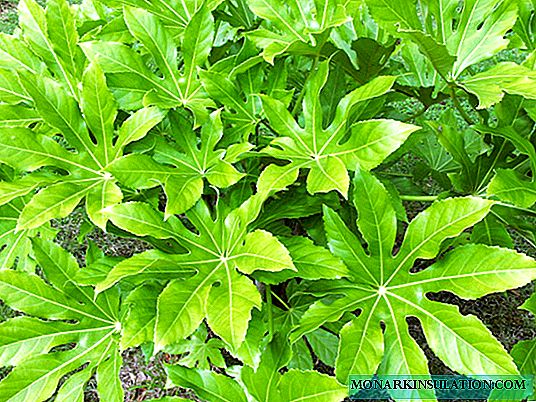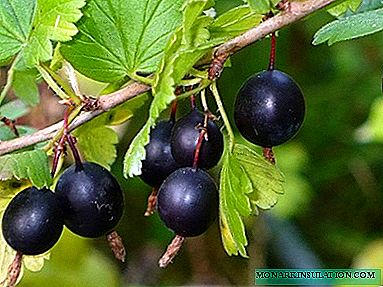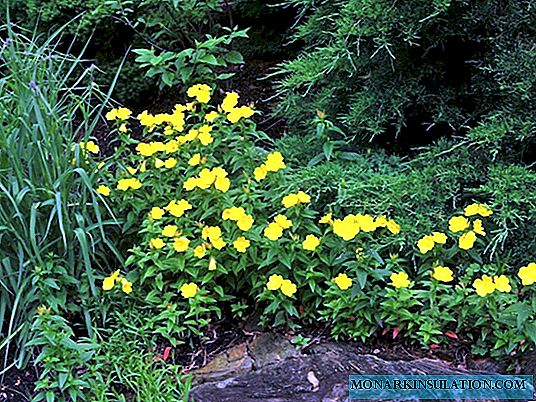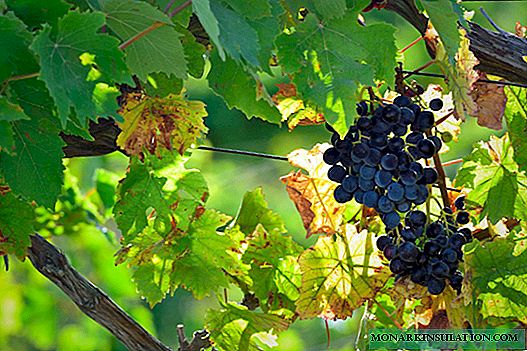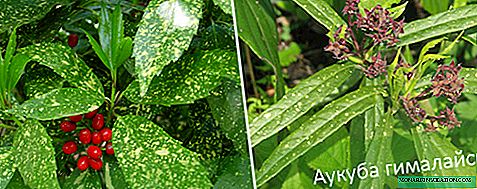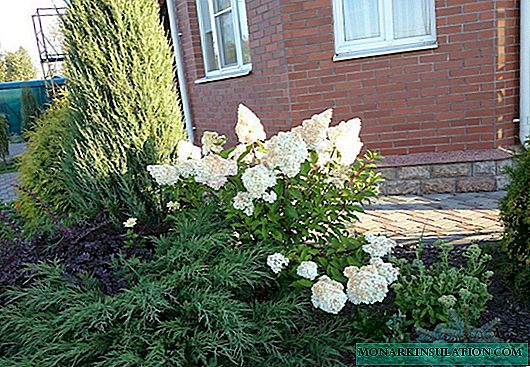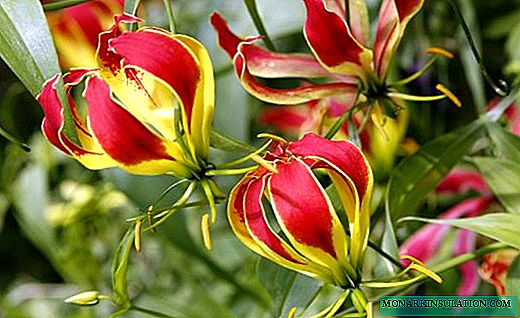Gloriosa is a surprisingly beautiful climbing plant with unusual flowers that resemble bright torches or Chinese lanterns. Perhaps that is why the plant got its name, which translates as "flower of glory." A few genus belongs to the colchicum family. In just a year, the flower manages to grow long lashes and become covered with flowers, and by autumn completely wither. For beauty and simple care, flower growers bring this magnificent vine to their home.

Botanical Description
Gloriosa is a winding perennial with tuberous rhizome. A narrow tuber is covered with a smooth light brown bark. Its length is 20-30 cm, and its diameter is up to 2 cm. Gloriosa lives in East Asia and South Africa. To survive the unfavorable period for itself, the entire terrestrial part of the plant dies for the winter and in the spring begins to develop anew.
Soft shoots are covered with bright green smooth bark. They have a circular cross section and reach 1-2 m in length. The internodes are located quite close to each other. They contain several sessile leaves. Lanceolate or ovate leaf plates with a very elongated end have a smooth surface with a pronounced central vein. At the tip of the sheet is a mustache, which serves to be attached to the support.












Flowers on gloriosa appear in June and remain until the beginning of autumn. Large, daffodil-like buds consist of a bunch of long stamens and bright petals bent up. Petals have a smooth or wavy edge. After pollination, large trihedral seed bunches ripen in place of the flowers. They open independently as they mature. Inside are brownish-red rounded seeds.
It is important to remember that all parts of gloriosa are very toxic. They contain the dangerous alkaloid colchicine. If it enters the stomach, the substance causes severe poisoning up to death.
Types of Gloriosa
In a small genus of gloriosa, only one species is suitable for growing at home - this is gloriosa luxurious. The shoots are covered with bright green lanceolate leaves 10-12 cm long and 1.5-3 cm wide. Large petals with wavy edges are bent up. Their length is 10-12 cm and a width of 1-3 cm. Only the blossoming flowers are painted in green-yellow tones, but alternately orange, red and raspberry shades appear on them.
To diversify such a beautiful plant, breeders have bred several decorative varieties:
- Gloriosa Rothschild - the plant is distinguished by larger shoots and leaves. Petals quickly turn yellow at the base and crimson at the end.
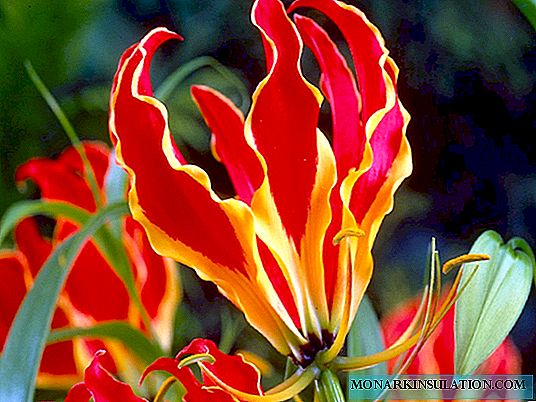 Gloriosa Rothschild
Gloriosa Rothschild - Gloriosa Carson - differs in more modest sizes and unusual coloring of flowers. The center of the petal has a purple-brown color, and the edges are light yellow;
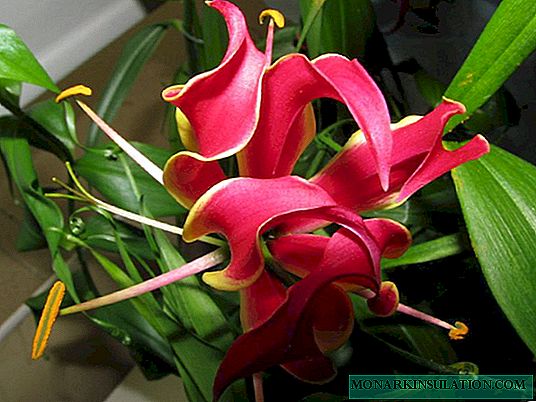 Gloriosa Carson
Gloriosa Carson - Gloriosa simple - has large, branched shoots (up to 3 m in length) with bright green lanceolate leaves. The flowers consist of long stamens and six greenish-red petals with a wavy edge.
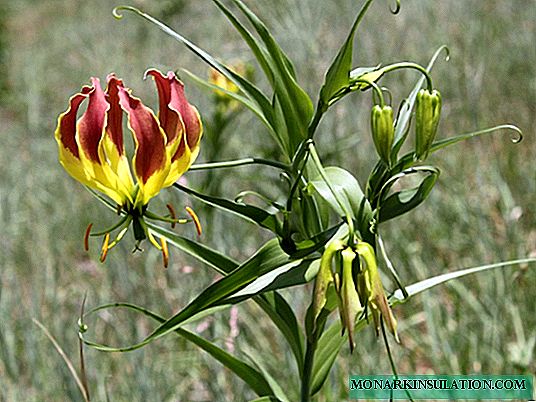 Gloriosa simple
Gloriosa simple - Gloriosa Grena - the plant has plain lemon-colored petals with smooth edges, which increases the similarity with Chinese lanterns.
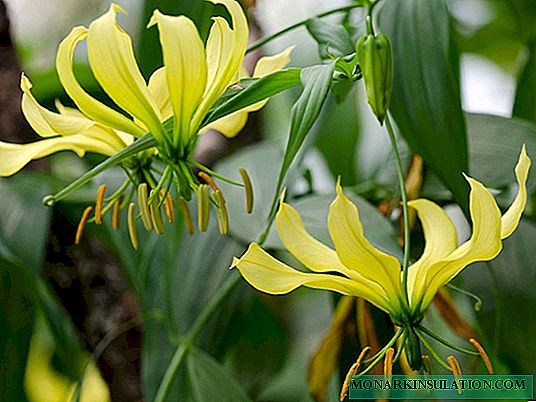 Gloriosa Grena
Gloriosa Grena
Breeding methods
Gloriosa can be propagated by the following methods:
- Sowing seeds. Seeds remain viable for no more than 9 months, so there is no need to delay their planting. Crops are produced at the end of February in small greenhouses, in a mixture of peat with leafy soil. The container is covered with a film and kept at a temperature of + 22 ... + 24 ° C. Ventilate and moisten the soil regularly. Shoots appear together in 1-2 weeks. Flowering seedlings are expected in the fourth year after planting.
- Planting tubers. During the season, new branches grow on the tuber, they can be separated from each other. At the end of winter, it is enough to plant them individually in small pots with a moist mixture of turf and sheet soil with sand. Tuber should be planted with a bud of growth up to a depth of 3 cm. They contain seedlings at a temperature of + 22 ... + 24 ° C. When a sprout appears, regular watering can begin as the soil surface dries. It is important to immediately take care of the availability of support for the plant.
Plant transplant
Since October, gloriosa goes into a dormant state and dries up land shoots. Tubers can be stored in a cool pantry without being removed from the ground, or dug and placed in a cardboard box, which is placed in the refrigerator. The transplant is performed annually in February, before the start of active growth. It is necessary to select medium-sized pots so that the rhizome is located freely. Too large tanks make ventilation and drying of the soil difficult. Land for gloriosa includes:
- sheet soil;
- leaf humus;
- turf soil;
- sand;
- peat.
Large shards or pebbles are necessarily laid out on the bottom to drain water. The tuber is placed obliquely, they try not to compact the soil much. After transplanting, watering is not carried out immediately, but only after 2-3 days.

Home Care
Caring for gloriosa at home is easy. It grows well and pleases with beautiful flowering.
Lighting. The flower prefers bright rooms. The ideal place for it would be the eastern or western window sills, as well as open balconies. On the south window, it is better to shade the shoots in the afternoon hours.
Temperature. For thermophilic gloriosa, the content is ideal at + 20 ... + 25 ° C. It is important to carefully protect the vine from drafts and sharp night cooling. They cause the leaves and flower buds to fall. At rest, the tubers are stored at a temperature of + 8 ... + 16 ° C.
Humidity. Around gloriosa it is important to maintain high humidity. It is placed near aquariums, fountains or pallets with wet expanded clay. It is advisable to spray the leaves daily, but try to prevent droplets of water from collecting on the flowers.
Watering. With the advent of the first shoots, gloriosa should be regularly watered with warm, well-purified water. Between irrigation, the land should only dry out by a quarter. In the fall, watering is gradually reduced and completely stopped by winter.
Fertilizer. During the active vegetation period, it is recommended to fertilize gloriosa. For this, solutions of mineral and organic fertilizers are applied to the ground twice a month. With an annual transplant into fertile, humus-rich soil, there is no need for fertilizing.
Support. Since gloriosa has creeping shoots, it is necessary to create a support in advance. It can be an arched stand in a pot or a wall on the balcony. The vines can be carefully bent and tied, forming the necessary shapes.
Diseases and pests. Gloriosa sometimes suffers from root rot. It is affected by aphids, spider mites and scale insects. Treatment with insecticides (Actellik, Karbofos, Aktara) helps against parasites.

Possible difficulties
With its appearance, gloriosa is able to signal errors in care:
- insufficient lighting - the growth of gloriosa slows down;
- sharp cooling and drafts - young leaves darken and curl;
- dampness or waterlogging of the soil - a whitish coating on the shoots;
- too dry air - the tips of the leaves dry.

If you respond in a timely manner to the first signs of gloriosa disease and change the conditions of detention, it will quickly recover.





